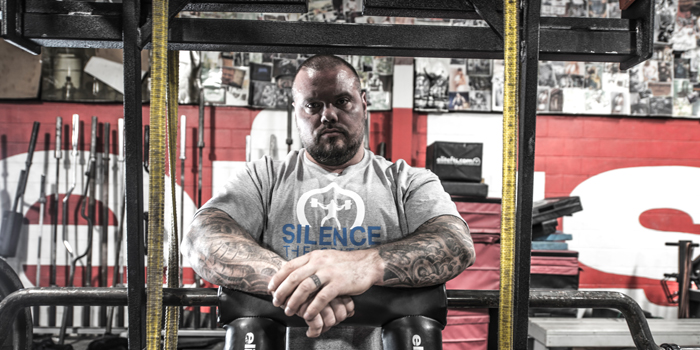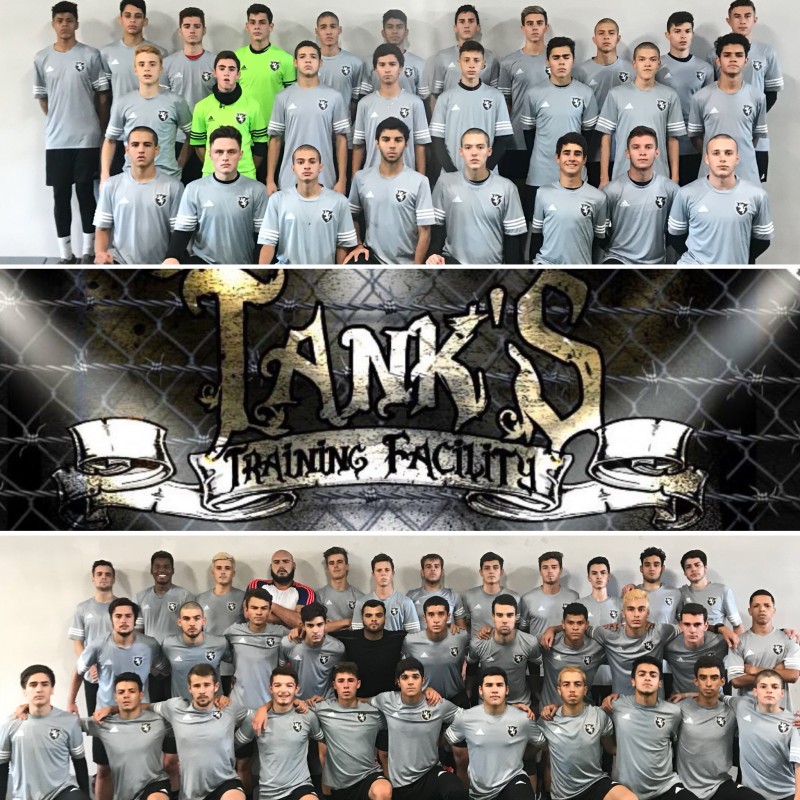
Early in my teenage years I grew a passion for training and working out. This passion would grow more and more as the years went by, eventually turning into my business, job, and the way I make a living. The team training aspect in the strength and conditioning field was one I became accustomed to while in college. Training with 100 other athletes with one goal in mind—to get better and dominate—was one of the best experiences I have had.
To this day, I thoroughly enjoy training larger groups of athletes. My facility specializes in teams, organization, and large groups. When the Gateway Lions Academy approached me a few months ago to train their soccer athletes, I was excited, to say the least. When meeting with the coach, he emphasized his goal was to have me improve their strength, power, and speed while reducing injuries. For those of you not in the St. Louis area, the Gateway Lions Academy is a St. Louis-based Christian academy where the majority of the student-athletes are foreigners, mainly from Portugal and South Africa. They have a similar structure to IMG Academy in Florida: eat, sleep, and breathe school and sports while working towards receiving a collegiate scholarship. The athletes come to the states to have a better opportunity to go to college through scholarships. Overseas their opportunities for athlete recognition and training are not as good as here in the United States. Here, they get more "looks" and can showcase themselves better by being noticed in person.
READ: An Interview with Paul Goodman, Head Strength and Conditioning Coach of the Chicago Blackhawks
Out of over 65 athletes I train, I would say that fewer than 10% of them had prior strength and conditioning training. Almost 100% of them are just pure raw talent, and their skillset and work ethic are unreal! They (as a team) are weekly receiving offers from colleges as they travel across the country playing in select tournaments. I asked the coach if they play some of the local high school teams—which are supposed to be good—and he said, with no ego behind it, that they would dominate almost all of them. These kids are that good.
To make training these athletes even more fun, almost none of them are completely fluent in English. That Portuguese class I took in college (that I never thought I would use) is now paying off. The majority of the time I use a distinct deepened tone in my voice as a sign language of sorts, to express what to do. To say the least, the first couple weeks were a challenge.
I ran a 10-week program with the team starting with high reps and low weight, then a progression to week 10 where we tested them out to get numbers. We had some great results. We had over eight of the athletes squat over 300 pounds, five bench press over 200 pounds, and eight deadlift over 300 pounds. These were the big three tests, as well as their broad and box jumps and some other conditioning tests that are very unique to what we do at Tank’s Training Facility. Everyone greatly improved overall and, more importantly, no one had any injuries. Mind you, these numbers might seem low to most elitefts readers. However, the age range of these athletes is 15 to 18 years old, and most have never touched a weight.
To me, the best compliment is when the coach and the athletes take the time to let me know how much better they look, feel, and perform. The athletes just came off spring break, where most went home or on vacation. There was a good amount of them that stayed in town instead of leaving over spring break, so I gave them options to join my normal classes in order to stay on track. Today we started back up on a six-week program leading to the end of their school year. We are now in talks about doing a summer strength and conditioning program for those who want to stay. Below is the weekly breakdown for them starting with week one. A and B exercises (i.e. 1A, 1B) indicate the exercises are performed as supersets.
Monday — Lower Body Emphasis
Group A — 7:15 AM
Group B — 9:15 AM
Pre-Lift
- Dynamic Warm-Up: 8 to 10 minutes
- Step Drills: 3 to 5 minutes
- Mobility Work: 3 to 5 minutes
Lift
1. Squat — 5x12
2A. Front Squat — Timed or Reps
2B. Broad Jumps
3. Lunge Variations
4. Nordic Curls
5. Midsection Work
6. Agility or Conditioning (depending of weekend load and games)
7. Stretch
Wednesday — Upper Body Emphasis
Group A — 7:15 AM
Group B — 9:15 AM
Pre-Lift
- Dynamic Warm-Up: 8 to 10 minutes
- Step Drills: 3 to 5 minutes
- Mobility Work: 3 to 5 minutes
Lift
1. Bench Press — 5x12
2. Pull-Ups — 5x12
3A. Shoulder Press — Timed or Reps
3B. Kettlebell Low Row
4A. Barbell Curls — Timed or Reps
4B. Push-Ups
5. Midsection Work
6. Agility or Conditioning (depending on what we did Monday)
7. Stretch
Friday — Full Body Emphasis
Group A — 7:15 AM
Group B — 9:15 AM
Superset most of this training session. This session varies somewhat depending on whether or not a weekend tournament is scheduled.
Pre-Lift
- Dynamic Warm-Up: 8 to 10 minutes
- Step Drills: 3 to 5 minutes
- Mobility Work: 3 to 5 minutes
- Bar Movements: 3 to 5 minutes
Lift
1A. Deadlift — 5x12
1B. Box Jumps
2. Plyo Push-Ups — Timed
3. Jump Shrugs — Timed
4. Speed Lunges —Timed
5. Band Pull-Aparts — Timed
6. Agility or Conditioning (depending of weekend load and games)
7. Stretch
This is just a sample of what we did from week to week. Every few weeks we threw in an elitefts variety bar to switch things up. The athletes are so raw we kept a lot of it meat-and-potatoes and worked a boatload on form and technique. We had zero injuries and, as I said, we had some great results. During the 10 weeks, I heard from the team how many tournaments they won and how many scholarships were offered. This, to me, is pretty cool to hear and see. We have just touched a small amount of what we will be doing in the future. I have to build a foundation and structure to every organization and team and allow them to learn how my template works. Once that happens, almost anyone in this industry will know who the Gateway Lions are (and where they train).











